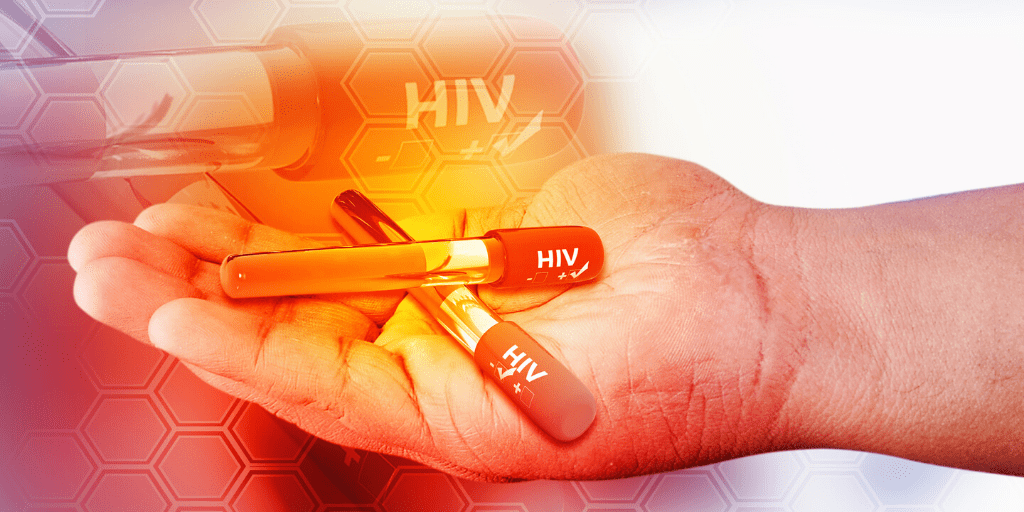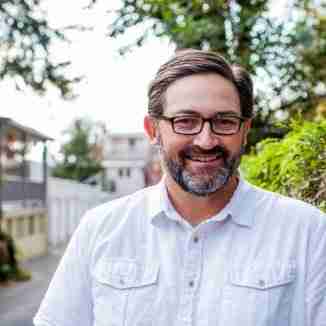
Here’s Why the First Cure for HIV Could Emerge from Maryland
These Five Life Science Organizations are Striving for an HIV Cure
October 3, 2023
For those that lived through the devastation and horror of the HIV/AIDS epidemic of the early 1980s, effective treatment, let alone a cure for Human Immunodeficiency Virus (HIV), seemed unimaginable.
Some three decades later, a host of Maryland life science companies and research organizations are getting closer to making what was once unthinkable, real.
So little was known about this devastating immune disorder in the early phases of the HIV/AIDS epidemic.
In the early days of the HIV/AIDS crisis, the BioHealth Capital Region was the epicenter of HIV/AIDS research, with much of this groundbreaking research occurring within the lab of the now famed NIH researcher, Dr. Robert Gallo. In 1983 and 1984 Gallo and his collaborators co-discovered and confirmed that the virus responsible for the killer disease known as AIDS was human T lymphotropic virus type III (HTLV-III). Gallo and the company went on to develop the first test that identified the virus in humans—the HIV-antibody blood test.
American Gene Technologies Spins Off Addimmune as a Separate Company With a Focus on Curing HIV
By 1983 the disease had started to spread globally. By 1999, approximately 33 million people across the globe were living with HIV and an estimated 14,000,000 million people had died from AIDS since the epidemic began.
The 1995 approval of Highly Active Antiretroviral Treatment (HAART), which was the result of the remarkable, collaborative efforts of the scientific community, led to the reduction of AIDS-related deaths and hospitalizations by 60-80%. A short time later what was once a three-drug cocktail had been transformed into a pill taken once daily by HIV sufferers.
As of 2017, 19.5 million people are estimated to be receiving antiretroviral treatment globally. While one of the greatest achievements in medical history, HAART and subsequent treatment forms do not cure HIV. Within just weeks of stopping treatment, the virus returns to full strength and chronic inflammation caused by suppressed HIV can lead to adverse health effects over the long term. Current HIV treatments control it but do not cure it; in fact, research shows that those being treated for HIV are more susceptible to other diseases and health risks at an earlier age.
Despite the amazing advancements in HIV/AIDS treatments, HIV/AIDS continues to be a major global health threat.
These Maryland life science organizations are on a mission to cure HIV
It would be a fitting conclusion for an HIV cure to emerge from the state where the virus was first linked to AIDS and where the first human diagnostic was developed.
Multiple Maryland companies and research institutions are on the leading-age of HIV research and development, making the state a hotbed of potential next-generation HIV therapies and, possibly, the source of a cure for this devastating global health issue. Some of the most promising cure candidates are coming out of Maryland’s thriving cell and gene therapy cluster.
Let’s take a look at some of the amazing progress that’s happening right now across Maryland and take a deeper dive into five of the leading organizations that are on a mission to develop the first HIV cure.

American Gene Technologies (AGT), Rockville, Maryland
AGT is a gene and cell therapy company with a proprietary gene-delivery platform to rapidly develop gene and cell therapies to cure infectious diseases, cancers and monogenic disorders.
One of its lead gene therapy products is a potential functional HIV cure. In 2019 AGT submitted the IND to the FDA for a Phase I trial of its autologous cell therapy for HIV. The first patient was infused in May 2021 and by February 2022 the first five patients showed critical efficacy markers.
While HIV has become a manageable chronic virus for many, in less developed countries HIV/AIDS is still a devastating illness. Developing an HIV cure would relieve millions from the side effects of antiretrovirals used to suppress HIV and prevent AIDS, avoid the serious quality-of-life issues of long-term treatment, and potentially save the lives of countless others.
In June of this year, AGT announced that they would be spinning off their HIV Cure asset into a new company called AddImmune which was later announced that it would be going public through a SPAC with 10X Capital Acquisition Corp.
“If we are successful, patients will be able to throw away their medication, will not progress to AIDS, and will be immune to future HIV exposures.”
Jeff Galvin, CEO AGT
The potential single-dose treatment would be delivered as a genetically-modified cell product made from a patient’s own cells. AGT’s strategy is unique because it focuses on the key immune cells responsible for catalyzing strong immunity against a virus. AGT’s treatment strategy seeks to protect these cells; one of the first cell subsets to be disabled by HIV. This subset of cells is understood to be critical to building an immune response to any virus. If achieved, the cell’s natural process of immunity is restored and any future rise of HIV in the body will be attacked by an individual’s own immune system.
AGT’s treatment includes the production of an autologous cell product that is highly enriched for HIV-specific CD4+ T cells that are then transduced with a lentivirus vector known as AGT103 to protect against HIV-mediated T cell depletion. The combination of these enriched cells and the lentiviral vector forms a cell product AGT has dubbed AGT103-T. This cell product is delivered intravenously to HIV patients. AGT103-T should control viremia and work to remove infected cells from the body, thus eliminating the need for lifelong antiretroviral treatment.
AGT is currently collaborating with the Institute of Human Virology, University of Maryland Baltimore to collect leukapheresis specimens from HIV positive individuals for an ongoing observational study performing and qualifying the cell process, which is explained in greater detail here. The company expects its potential HIV cure to move into clinical trials in the next six months.

The Institute of Human Virology (IHV), University of Maryland, Baltimore
IHV is part of the University of Maryland School of Medicine and is a recognized leader in the virology field. IHV was founded by Dr. Robert C. Gallo who co-discovered HIV and developed the first HIV blood test.
IHV is heavily focused on HIV/AIDS research and the organization is currently progressing a promising HIV/AIDS vaccine through its pipeline. IHV01 (FLSC-001) has completed a Phase I trial and was supported, in part, from funding provided by the Bill and Melinda Gates Foundation.
This potential HIV/AIDS treatment seeks to neutralize the different strains of HIV found across the globe from the moment of infection. IHV’s HIV/AIDS research is …” focused on the CCR5 chemokine receptor that plays a crucial role in HIV-1 infection and as such offers an important potential therapeutic target.” (IHV Website). IHV is striving to develop biological HIV/AIDS treatments that are less expensive, have fewer adverse impacts and are more accessible to patients around the globe.

Lentigen, Gaithersburg, Maryland
Lentigen is a leading provider of custom lentiviral vectors used in cell and gene therapy research and development. For HIV, Lentigen is at the forefront of efforts to use Chimeric Antigen Receptors (CAR) T-Cell therapy to improve the treatment of HIV and possibly cure it.
Lentigen, along with researchers at the University of Pittsburgh in Pennsylvania and the Albert Einstein School of Medicine, has been conducting a promising study of the use of CAR T in the treatment of HIV. The researchers developed duoCAR T cells that were able to kill white blood cells infected with a range of HIV variants. Testing in mice also produced promising results. Mice with humanized immune systems were simultaneously injected with CAR T cell and HIV-infected human cells into their spleens. When the spleens were examined a week later, five of the six mice had no identifiable HIV DNA and their viral levels had decreased by 97.5% (source: Science).
The study hopes to test the duoCAR T approach in HIV-infected people in the near future.

Institute for Bioscience & Biotechnology Research (IBBR), College Park, Maryland
IBBR is a joint research enterprise of the University of Maryland, College Park and the National Institute of Standards and Technology (NIST). Last year IBBR received $3.9M from the National Institutes of Health (NIH) to “…develop a multi-specific, single-agent antibody therapeutic against HIV-1 to block virus infection and to clear the reservoir of HIV-infected cells from the body,” according to an IBBR press release from November 2018.
The project is led by Dr. Yuxing Li, Associate Professor, Department of Microbiology and Immunology, University of Maryland School of Medicine, and Fellow at the Institute for Bioscience and Biotechnology Research (IBBR), in collaboration with Dr. Qingsheng Li, University of Nebraska-Lincoln, and Dr. Keith Reeves, Harvard Medical School/Beth Israel Deaconess Medical Center.
IBBR’s research has focused on overcoming some of the limitations of existing antiretroviral (ARV) HIV treatments, including adverse side effects, ARV treatment drug resistance and how HIV integrates into the human genome, creating pockets of HIV that ARV cannot eliminate. Dr. Li and his group have produced bi and tri-specific antibodies that demonstrated neutralization of 95% of circulating HIV-1 viruses. These bi and tri-specific antibodies can also bind to multiple locations on the HIV-1 surface glycoprotein Env, which could potentially thwart treatment resistance via mutation. The team is now working to optimize their multivalent antibody constructs to “…recognize Env proteins on the surface of latently infected host cells, and to signal other immune system components to destroy those cells that contain the hard-to-reach viral pockets, or as the team calls them, a “viral reservoir.” (IBBR press release)

National Institutes of Allergy and Infectious Diseases (NIAID), Bethesda, Maryland (NIH)
NIAID has been at the forefront of HIV research for decades and continues to be a major player in the research and development of possible HIV treatments and potential cures. NIAID’s research into HIV played a critical role in developing ARV drugs that transformed HIV into a chronic condition rather than a fatal infection.
NIAID-supported research has led to many ARV drug improvements, including reducing the number of pills required, diminishing adverse impacts and identifying the best drug combinations. The organization works with many leading global HIV/AIDS research organizations to identify and develop better HIV treatments.
NIAID is focused on both developing new HIV treatments as well as supporting other researchers and research organizations investigating new therapies. The ultimate goal is to potentially make HIV treatment a single dose, lifetime treatment, and, eventually, the complete eradication of HIV. NIAID is involved in many research and development projects focused on HIV and there are too many to dig into in a single article. Some of their current HIV research and development efforts are focused on investigational long-acting HIV drugs, rilpivirine LA and cabotegravir LA, for patients that have had difficulty following conventional antiretroviral therapy programs. Another NIAID study will test combining monthly injections of cabotegravir LA and infusions of an NIAID-discovered broadly neutralizing antibody called VRC01LS to see if the combination can keep HIV suppressed in people whose infection was previously controlled by antiretroviral therapy.
The organization’s support has also helped in the discovery of the experimental drug islatravir (also known as EFdA or MK-8591) and maturation inhibitors. NIAID also has partnered with the Maryland industry, including a research collaboration agreement with AGT for research studies on the company’s cell and gene therapy for HIV/AIDS.

Frederick National Labs for Cancer Research/Leidos Biomedical Research, Frederick, Maryland
A partnership between NIAID, Frederick National Labs for Cancer Research (operated by Leidos Biomedical Research, Inc.) and a team of collaborators recently developed 38 new simian/human immunodeficiency viruses (SHIVs) for prevention and treatment studies. These new SHIVs have closed a gap that previously existed in HIV research. These SHIVs are pathogens engineered in the lab that can help in the investigation of potential new HIV therapies as well as other treatments and vaccines.
These SHIVs target HIV subtype C, which causes approximately half of all HIV infections, and were created using HIV samples from people recently infected, allowing better modeling of more current forms of HIV subtype C circulating globally. The stronger modeling will increase pre-clinical research’s ability to predict effectiveness. Other SHIVs had used samples acquired from patients that had been infected long before the sample was pulled, limiting the SHIVs effectiveness against more current strains of HIV. While improvements are still needed, including challenges with replication, these new tools for HIV research and discovery hold tremendous promise.
In the late 1970s and early 1980s finding a cure for HIV/AIDS wasn’t even on the radar. The scientific community was racing to understand the fundamentals of a virus that was rapidly spreading devastation and death across the globe. The speed with which the medical community came to understand the disease and to develop treatments like HAART is one of the truly amazing stories of the 20th century.
One or several of these Maryland companies and research institutions have a real chance to achieve what was once unthinkable—finding a cure for HIV that could help tens of millions of people across the globe live better, healthier and longer lives.
If an HIV cure emerges from Maryland, the BHCR community will have helped write the final chapter of HIV/AIDS’ terrible yet hopeful story.
- About the Author
- Latest Posts
Steve brings nearly twenty years of experience in marketing and content creation to the WorkForce Genetics team. He loves writing engaging content and working with partners, companies, and individuals to share their unique stories and showcase their work. Steve holds a BA in English from Providence College and an MA in American Literature from Montclair State University. He lives in Frederick, Maryland with his wife, two sons, and the family dog.






